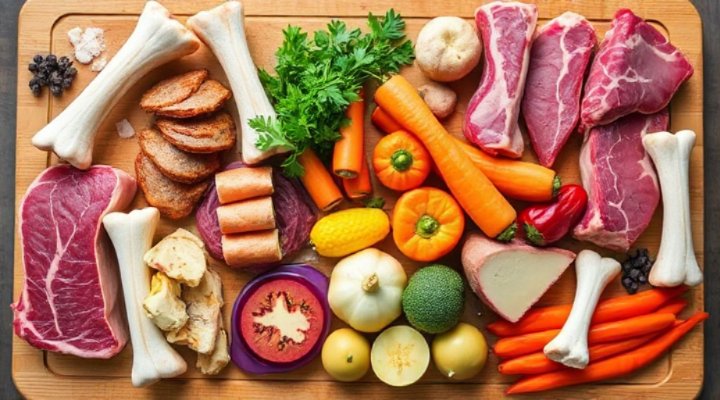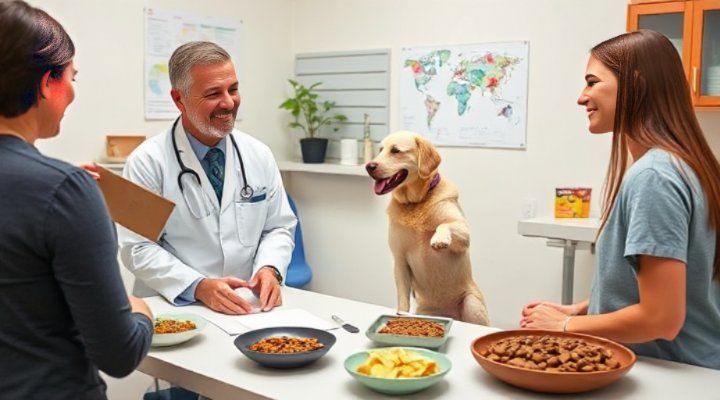Transitioning your dog to a raw food diet can be a game-changer for their health and vitality. However, it’s essential to do it right to avoid any nutritional imbalances or health risks. Let’s dive into the world of raw feeding and explore how you can make this change safely and effectively.

What is a Raw Food Diet for Dogs?
A raw food diet for dogs, often referred to as BARF (Biologically Appropriate Raw Food), consists of uncooked meats, bones, and organs. This diet aims to mimic what dogs would naturally eat in the wild. For instance, my neighbor’s German Shepherd, Max, switched to a raw diet last year, and the transformation in his energy levels and coat shine was remarkable!
According to the American Veterinary Medical Association, while raw diets can offer benefits, they must be carefully balanced to meet all of your dog’s nutritional needs. That’s why it’s crucial to understand the components of a proper raw food diet.

Benefits of a Raw Food Diet for Dogs
Many pet owners report significant improvements in their dogs’ health after switching to raw food. Some of the most notable benefits include:
- Improved digestion and smaller, firmer stools
- Healthier skin and shinier coat
- Increased energy levels
- Better dental health
- Reduced allergy symptoms
If you’re considering this diet for your pup, you might find our article on We Feed Raw Diet for Dogs particularly helpful for understanding the safety aspects.

How to Transition Your Dog to a Raw Food Diet
Transitioning your dog to raw food should be a gradual process. Here’s a step-by-step guide:
- Start slowly: Begin by replacing 25% of their current food with raw food.
- Monitor their reaction: Watch for any digestive changes or allergies.
- Increase gradually: Over 2-3 weeks, increase the raw portion while decreasing their old food.
- Maintain variety: Ensure your dog gets different protein sources for balanced nutrition.
Remember, every dog is different. Some may transition quickly, while others need more time. For dogs with sensitive stomachs, you might want to check out our guide on Natural Balance Dog Food for Sensitive Stomachs before making the switch.

Ensuring Nutritional Balance in a Raw Diet
One of the biggest challenges with raw feeding is ensuring your dog gets all the necessary nutrients. A balanced raw diet should include:
| Component | Percentage | Examples |
|---|---|---|
| Muscle meat | 70-80% | Chicken, beef, lamb |
| Bone | 10-15% | Chicken wings, necks |
| Organs | 10% | Liver, kidney, heart |
| Vegetables/Fruits | 0-10% | Carrots, apples, spinach |
For puppies or dogs with specific health conditions, consulting with a veterinarian or canine nutritionist is highly recommended. The FDA provides valuable information about the safety considerations of raw pet food diets.

Common Mistakes to Avoid
While raw feeding can be beneficial, there are several pitfalls to watch out for:
- Nutritional imbalances: Not providing enough variety in protein sources or skipping essential organs.
- Bone hazards: Feeding cooked bones or bones that are too large can be dangerous.
- Poor hygiene: Improper handling of raw meat can lead to bacterial contamination.
- Over-supplementation: Adding too many supplements can create imbalances.
If you’re unsure about preparing raw meals at home, you might consider commercial raw food options. Our review of Wet Dog Food Benefits compares different feeding options that might suit your lifestyle.
Final Thoughts on Raw Food Diets for Dogs
Transitioning to a raw food diet can significantly improve your dog’s health and wellbeing when done correctly. Remember to:
- Make the transition gradually
- Ensure nutritional balance
- Practice proper food safety
- Monitor your dog’s health closely
- Consult with professionals when needed
Whether you choose to prepare meals at home or opt for commercial raw food, the key is to provide variety and balance. For more information on puppy nutrition, check out our article on Pro Plan Dog Food for Puppies.
Related Keywords: raw dog food benefits, homemade dog food recipes, canine nutrition guide, best diet for dogs, transitioning to raw food
